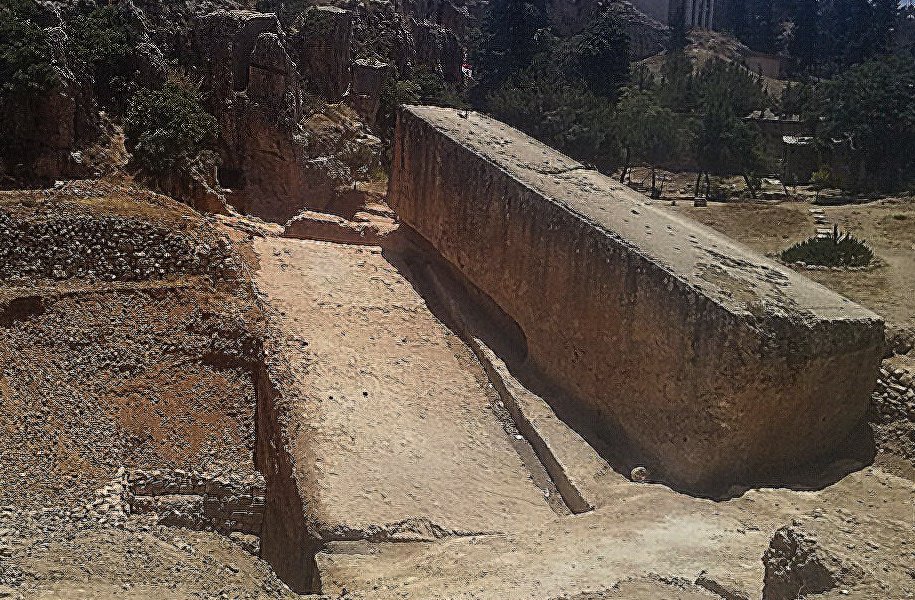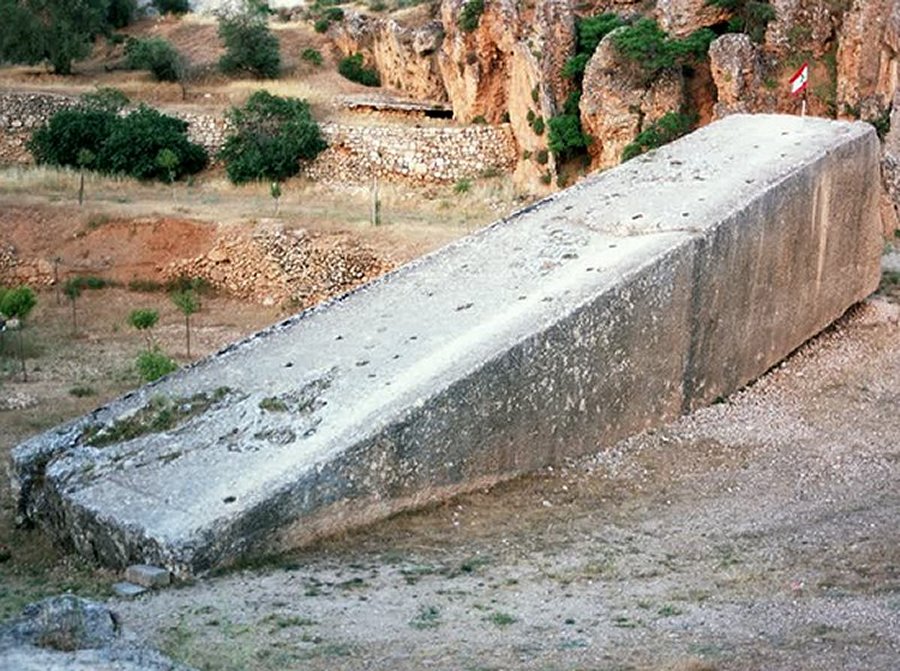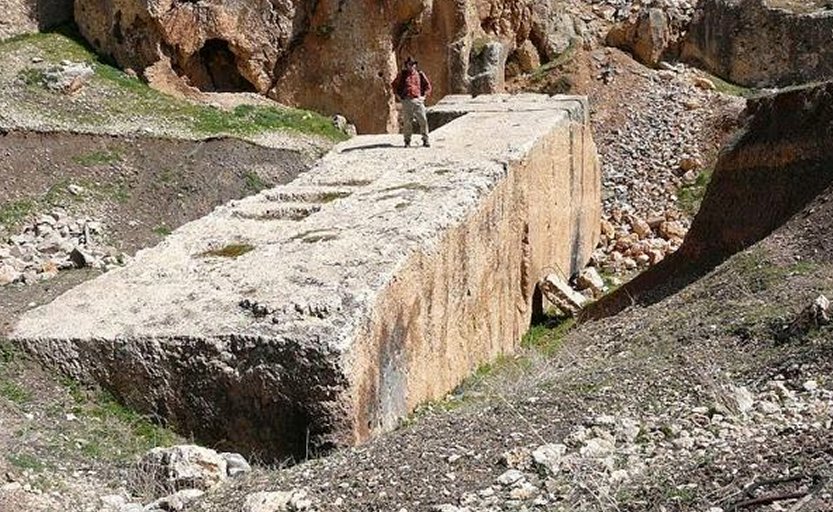Gigantic Horizontally Lying Stones Of Ancient City Of Baalbek
A. Sutherland - AncientPages.com - Advanced scientific and engineering skills were involved in construction at Baalbek (Ba‘albek), located in modern Lebanon.
The prehistoric stone platform, on which the Romans built later their temple to the sun, is a remarkable example of these prehistoric skills of the ancients.
These cut stone blocks were once cut and fitted together with unbelievable precision. Image via Stephen Strutt, Out of the Bottomless Pit
The Roman temples were constructed on top of an ancient, unimaginable platform, measuring 5 million square feet. The platform that already existed, when the Romans appeared in the area, was made from some of the largest stones ever used in any building project in human history.
Baalbek has a very obscure past; its origin has never been solved, although the Greeks, Roman, and Phoenicians made several attempts to figure it out.
Baalbeck – Stone of Pregnant Woman in Ruins of Baalbeck, Lebanon via touristtube.com
It is called “The Stone of the South” or (“Stone of the Pregnant Woman”) and together with another ancient stone block in the vicinity, it is among the largest monoliths ever quarried.
See also:
Gigantic Unfinished Stone Structures Cut With Amazing Stone-Working Techniques
It is 20.31 - 20.76 m long, 4 m wide at the base, 4.14 - 5.29 m wide at the top and 4.21 - 4.32 m high.
Legend says the monolith is named after a pregnant woman who pretended that she knew how to move the giant stone if people of Baalbek, only they would feed her until she gave birth. Another version of the legend says that pregnant, supernatural creatures known as “jinn” were involved in cutting and moving the stone.
Second monolith, Baalbek. Image: Wikipedia
A second ancient monolith was discovered in the same quarry in the 1990s. With its weight estimated at 1242 tons, it surpasses even the dimension of the “Stone of the South Woman”. The monolith is 19.5 - 20.5 m long, 4.34 - 4.56 m wide, 4.5 m high, assuming that its shape is consistent in its still-buried (invisible) parts. Based on its size, it is believed that it weighs between 1200 and 1500 tons.
The third monolith in the quarry of Baalbek, the so-called “Stone of Janeen” (in Arabic means baby infant) was discovered by the German-Lebanese team of archeologists in 2014. It is located below the “Stone of the Pregnant Woman” and directly beside of it.
Its weight is believed to be approx. 1650 t, which means it is the largest stone ever carved.
The largest ancient stone block, found in Baalbek/Lebanon, at an altitude of approximately 1,170 meters. Credits: Deutsches Archäologisches Institut
It is 19.6 m long, 6 m wide and more than 5.5 m high, still partly buried in the ground.
Modern builders of the largest structures scattered across the world have not cranes or other lifting technology solutions that can cut, move, lift, and fit the monstrous blocks of the ancient site at Baalbeck.
These cut stone blocks were once cut and fitted together with unbelievable precision.
Their duplication is still impossible even with all available means of the 21st century.
Written by – A. Sutherland - AncientPages.com Senior Staff Writer
Copyright © AncientPages.com All rights reserved. This material may not be published, broadcast, rewritten or redistributed in whole or part without the express written permission of AncientPages.com
Expand for referencesReferences:
B.Foerster, Aftershock: The Ancient Cataclysm That Erased Human History
More From Ancient Pages
-
 Mystery Of Pharaohs And Gods With Two Left Or Two Right Hands
Featured Stories | Oct 20, 2018
Mystery Of Pharaohs And Gods With Two Left Or Two Right Hands
Featured Stories | Oct 20, 2018 -
 Manticore – Legendary Persian Sphinx Whose Existence Is Still Discussed
Featured Stories | Jun 4, 2019
Manticore – Legendary Persian Sphinx Whose Existence Is Still Discussed
Featured Stories | Jun 4, 2019 -
 Ancient Chinese Ingenuity Created Sophisticated Time Keeping Machines: Proof Of Remarkable Ancient Knowledge
Ancient Technology | Jan 14, 2019
Ancient Chinese Ingenuity Created Sophisticated Time Keeping Machines: Proof Of Remarkable Ancient Knowledge
Ancient Technology | Jan 14, 2019 -
 Brokkr And Eitri – Norse Dwarves Who Fashioned Magical Artifacts For The Gods
Featured Stories | Aug 19, 2019
Brokkr And Eitri – Norse Dwarves Who Fashioned Magical Artifacts For The Gods
Featured Stories | Aug 19, 2019 -
 Ancient Roman Government Structure And The Twelve Tables
Civilizations | Jan 18, 2016
Ancient Roman Government Structure And The Twelve Tables
Civilizations | Jan 18, 2016 -
 Merovech – Legendary King Of The Franks And The Merovingian Dynasty
Featured Stories | Jan 18, 2019
Merovech – Legendary King Of The Franks And The Merovingian Dynasty
Featured Stories | Jan 18, 2019 -
 Why Did Ancient Romans Cut Off Their Thumbs?
Ancient History Facts | Mar 2, 2020
Why Did Ancient Romans Cut Off Their Thumbs?
Ancient History Facts | Mar 2, 2020 -
 Sacred Hidden Buyan Island And The Mysterious Alatyr Stone With Healing Powers May Have Existed
Featured Stories | Mar 22, 2018
Sacred Hidden Buyan Island And The Mysterious Alatyr Stone With Healing Powers May Have Existed
Featured Stories | Mar 22, 2018 -
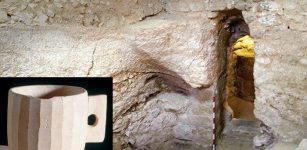 Childhood Home Of Jesus May Have Been Found Underneath The Sisters Of Nazareth Convent
Archaeology | Nov 24, 2020
Childhood Home Of Jesus May Have Been Found Underneath The Sisters Of Nazareth Convent
Archaeology | Nov 24, 2020 -
 Wanyūdō The Soultaker – Fearsome Yōkai In Japanese Mythology
Featured Stories | Nov 22, 2017
Wanyūdō The Soultaker – Fearsome Yōkai In Japanese Mythology
Featured Stories | Nov 22, 2017 -
 Nicholas Of Cusa – A Medieval Scholar And Mystic With Highly Unorthodox Ideas
Featured Stories | Aug 13, 2021
Nicholas Of Cusa – A Medieval Scholar And Mystic With Highly Unorthodox Ideas
Featured Stories | Aug 13, 2021 -
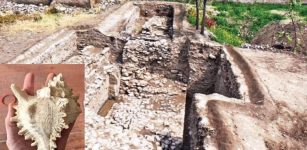 Second Gate Of Bazira And Unique Artifacts Discovered In The Ancient City Of Alexander The Great
Archaeology | Mar 29, 2022
Second Gate Of Bazira And Unique Artifacts Discovered In The Ancient City Of Alexander The Great
Archaeology | Mar 29, 2022 -
 Strange Tale Of Demonic Possession And Exorcism In 17th-Century New France – What Happened?
Featured Stories | Oct 21, 2022
Strange Tale Of Demonic Possession And Exorcism In 17th-Century New France – What Happened?
Featured Stories | Oct 21, 2022 -
 Blood Of St. Januarius – One Of The Most Remarkable Christian Relics
Artifacts | Jun 27, 2017
Blood Of St. Januarius – One Of The Most Remarkable Christian Relics
Artifacts | Jun 27, 2017 -
 Inventory Stela And Its Message: Controversy About This Artifact Still Remains
Artifacts | Jul 15, 2017
Inventory Stela And Its Message: Controversy About This Artifact Still Remains
Artifacts | Jul 15, 2017 -
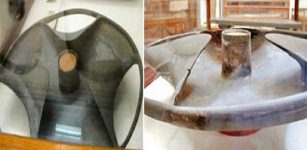 Schist Disk – Mysterious Piece Of Sophisticated Technology Could Rewrite History – Scientists Are Not Sure What They Are Dealing With
Artifacts | Jun 30, 2013
Schist Disk – Mysterious Piece Of Sophisticated Technology Could Rewrite History – Scientists Are Not Sure What They Are Dealing With
Artifacts | Jun 30, 2013 -
 How Important Was Music In Ancient Egypt?
Ancient History Facts | Jan 16, 2021
How Important Was Music In Ancient Egypt?
Ancient History Facts | Jan 16, 2021 -
 Unsolved Ancient Mystery Of Lost Pre-Olmec Civilization – Evidence Of Advanced Scientific Knowledge That Could Re-Write History
Civilizations | Jul 16, 2018
Unsolved Ancient Mystery Of Lost Pre-Olmec Civilization – Evidence Of Advanced Scientific Knowledge That Could Re-Write History
Civilizations | Jul 16, 2018 -
 Tribe Recalls Ancient Contact With An Extraterrestrial In The Amazon Jungle And A Strange Beam Of Light
Featured Stories | Jun 25, 2020
Tribe Recalls Ancient Contact With An Extraterrestrial In The Amazon Jungle And A Strange Beam Of Light
Featured Stories | Jun 25, 2020 -
 Abduction Of Idun, Goddess-Keeper Of Golden Juvenile Apples In Norse Mythology
Featured Stories | Nov 16, 2019
Abduction Of Idun, Goddess-Keeper Of Golden Juvenile Apples In Norse Mythology
Featured Stories | Nov 16, 2019

